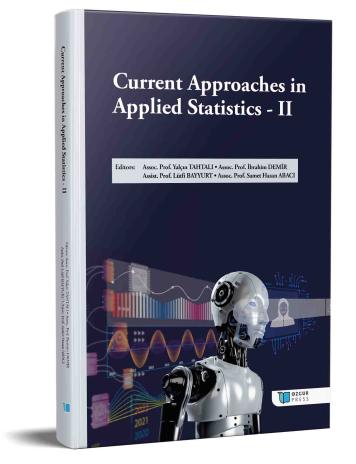
Evaluation of the Performance of BRICS-T Countries in the Context of the Economic Freedom Index
Chapter from the book:
Tahtalı,
Y.
&
Demir,
İ.
&
Bayyurt,
L.
&
Abacı,
S.
H.
(eds.)
2025.
Current Approaches in Applied Statistics II.
Synopsis
Since 1995, the Heritage Foundation has presented the factors that directly contribute to the economic freedom and prosperity of the international community in detail through the Economic Freedom Index (EFI). While the index evaluates the progress or decline of countries around the world, it focuses on key indicators of economic well-being such as economic growth, poverty reduction, longevity and health, as well as environmental protection. Through the index, the degree of economic freedom is relatively calculated as a significant factor in national development and prosperity on a global scale, and countries are ranked accordingly. Rankings of economic freedoms provide critical insights for countries, scholars, policymakers—in short, all stakeholders—to understand the impact of the measured criteria on economic growth. These rankings can guide the development of solutions to issues such as poverty and economic contraction faced by societies. Furthermore, through cross-country comparisons, differences in economic freedoms can be identified, and much can be learned about how to improve economic welfare and development. For these reasons, assessing the economic freedoms of countries holds vital importance. In this study, the economic freedom levels of the BRICS countries along with Turkey for the year 2025 are determined. Due to the presence of multiple indicators in the index and the involvement of multiple countries in terms of economic freedoms, the MEREC and WENSLO integrated AROMAN approach as Multi-Criteria Decision-Making (MCDM) techniques has been preferred. While the objective MCDM methods MEREC and WENSLO were used to determine the weights of the evaluation criteria, the AROMAN approach was employed to rank the BRICS-T countries.

